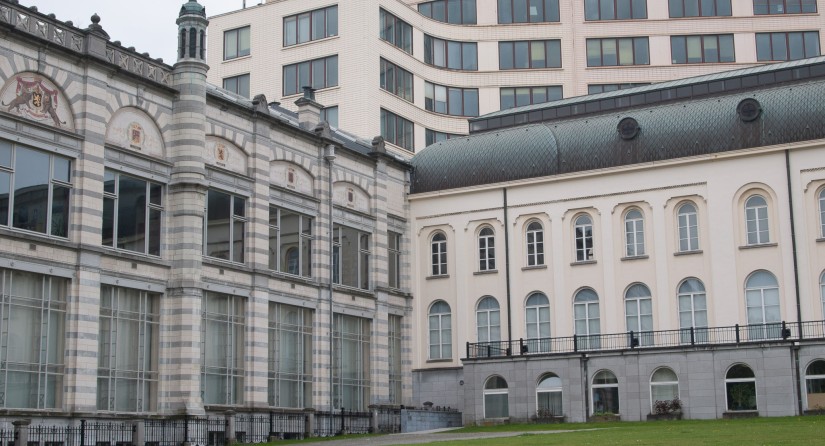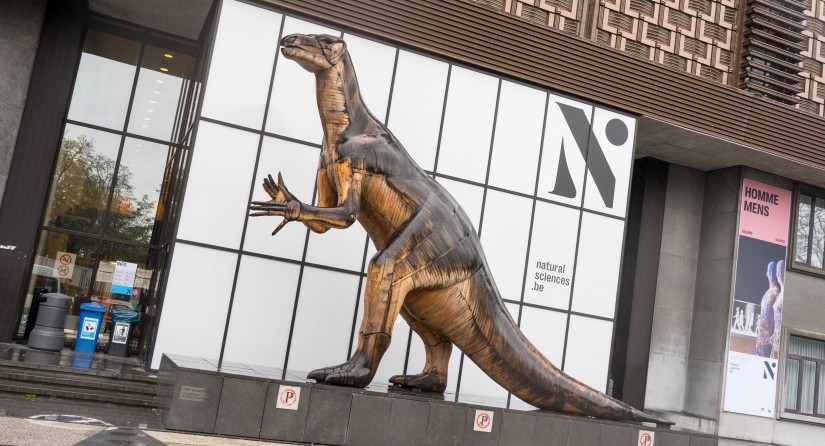The history of our organisation
In 1846, our organisation barely had ten staff
In 2023, we are a team of 400 scientists, administrative and technical staff working together to bring nature into everyone’s lives. In 175 years, our team has not only grown, but changed drastically in terms of our profiles, our structure and our partnerships.
Charting the shifts in our organisational structure over the years, we see the extent to which it moves with our collections. In the mid-1800s, we did not need more than a small staff: a director, a collection curator, room supervisors, a secretary and a taxidermist who prepared the specimens to be exhibited. Towards the late 1800s, as our team grew, our staff was structured across just seven sections, all related to our collections
A whole section was devoted to conchology, the study of mollusc shells, reflecting the richness of our mollusc collection at the time. This was the predecessor of our malacology section: one of our 13 sections in the late 20th century, by which time our collection had expanded greatly.


Evolution of the role of science
Our early marine and freshwater research, for example, which began as exploration work, gradually shifted to focus on supporting nature conservation and ecosystem management. As a direct consequence of this research, new sections were created within the Institute: Hydrobiology, Oceanography, Ecology and nature conservation. Our institute was a trailblazer in this field in particular, beginning to raise public awareness of ecological problems as early as the mid-1960s.
Our changing structure also highlights the uniqueness of our Institute. Few natural history museums in the world have accumulated such diverse roles, particularly in recent years: managing the state oceanographic research vessel Belgica since 1984; incorporating the Management Unit of the North Sea Mathematical Models in 1997; and hosting the state geological survey since 2002, for example.
A thoroughly Belgian institution
The story of this unique role is embedded in our history as a federal institution, dating from a time when Belgium was a very young country: just a teenager. When the Museum was created in 1846, it was attached to the Ministry of the Interior and supervised by a board of seven members. During reforms to the Belgian state in the 1980s, the Institute clung to its old structure, while other institutions had their research competences transferred to the regions or linguistic communities.
Still today, our Institute is one of ten museums and scientific institutes attached to the federal government; currently governed by the Belgian Science Policy Office (Belspo). As a Royal Museum and later a Royal Institute, we have always had close links with the Belgian royal family. Leopold I made several donations of collections; Leopold II supported the construction of the Janlet wing; while Leopold III had an office in our building. This strong relationship continues today: we still work closely with the Fonds Leopold III, for example, and our Museum participates in the annual exhibition Science and Culture at the Royal Palace of Brussels hosted by the Belgian royals.
Our partnerships with other Belgian institutions have marked our history. It was our former director Gilson that set up the Institute for Maritime Studies in Ostend in 1927: an early predecessor of the VLIZ with which we still work closely to this day. Some of our earliest directors joined us from the same Belgian universities we still regularly cooperate with on research projects. And our regular cooperation over the years with the Royal Museum for Central Africa in Tervuren is exemplified, among others, by the launch of our 2007 Joint Experimental Molecular Unit specialising in DNA barcoding.
Resistance and resilience
When we inevitably closed our doors in 2020 to ensure the safety of our staff and visitors in the COVID-19 pandemic, it was a reminder of how rarely we have had to put our work on hold. On some occasions, however, we have had no choice. In the winters of 1917 and 1941, it was a lack of fuel that forced us to close the Museum to the public so we could at least heat our scientific laboratories. At the end of 2016, we had to close for several days as part of the lockdown after the Paris attacks
And while there were times we also shut down during the two World Wars, our Institute is also notable for its resistance. During each of the two periods of German occupation, our directors at the time marked their opposition to the policy of the occupier. When Gilson was pressured into collaborating during WWI on a dig to excavate the riches at Bernissart, the staff of the Museum found ways to disrupt the plans, delaying the work until the war was over.
During WWII, Van Straelen's hostility towards the occupying power went even further. As a member of the resistance movement’s Secret Army, he regularly supplied their Head of Engineering and Destruction with glycerine taken from the Museum's endowments. He also negotiated the return of several members of staff who had been taken prisoner at the beginning of the occupation, as well as providing refuge to researchers and students following the closure of the Free University of Brussels. In the end, despite the significant dangers to the Museum, it maintained much of its ongoing work and escaped any major damage during the two world wars.
This resilience is perhaps the most striking common factor throughout the history of our organisation. We have a wide range of strengths: research and policy support, collections management and public engagement. It makes us a complex organisation. But the challenges our global society is facing are themselves multifaceted and interlinked. It perhaps explains why we continue to be well placed to address them.